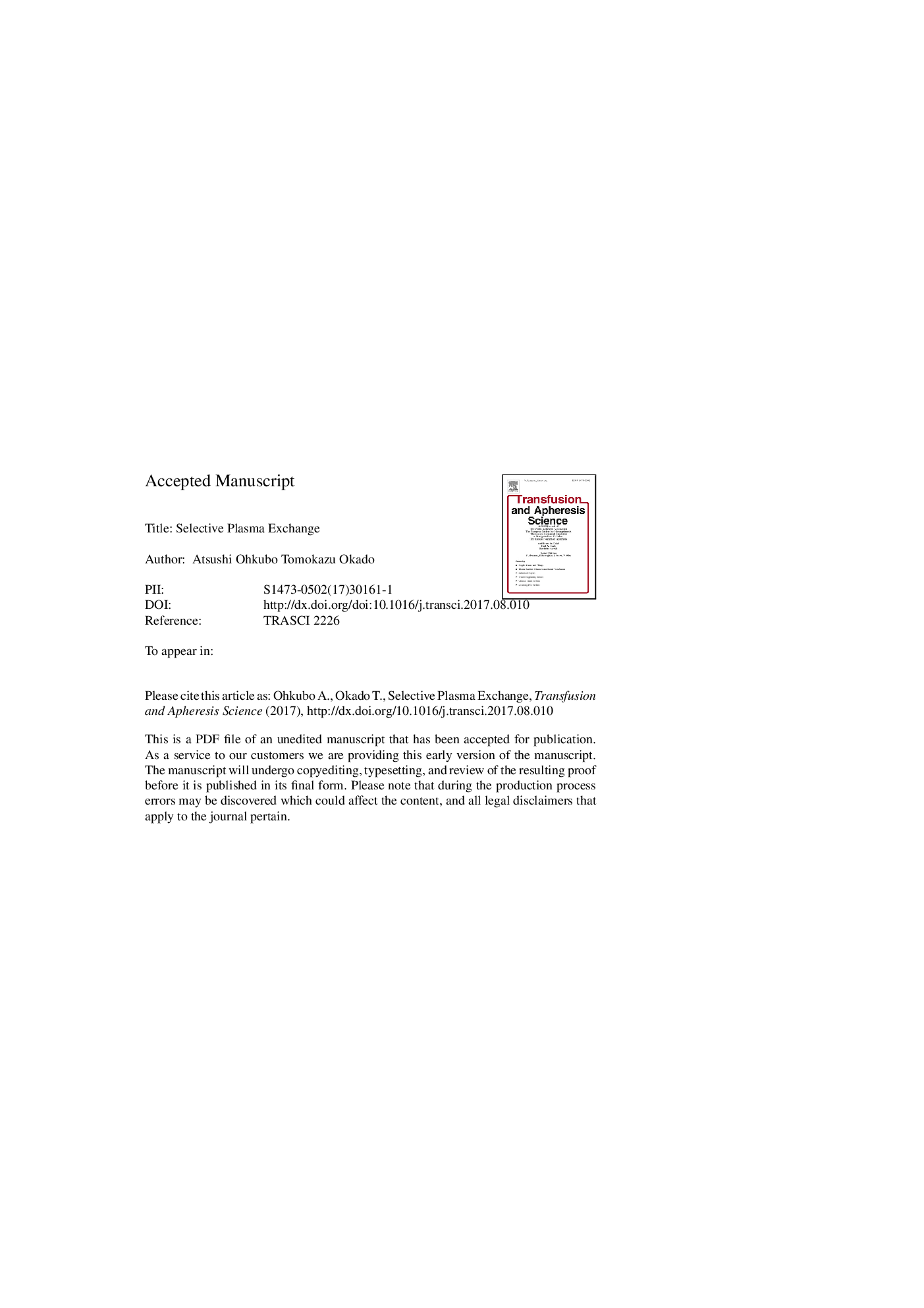| Article ID | Journal | Published Year | Pages | File Type |
|---|---|---|---|---|
| 8735132 | Transfusion and Apheresis Science | 2017 | 22 Pages |
Abstract
Selective plasma exchange (SePE) is a new modality of simple plasma exchange that uses a selective membrane plasma separator Evacure EC-4A10 (EC-4A) (Kawasumi Laboratories Inc., Tokyo, Japan). EC-4A has a relatively small pore size of 0.03 μm, which is around one-tenth that of conventional plasma separators. The sieving coefficients of albumin, immunoglobulin G (IgG), factor XIII (FXIII), and fibrinogen using EC-4A have been shown to be 0.73, 0.5, 0.17, and 0, respectively. Therefore, one session of SePE can remove approximately 50% of IgG regardless of the IgG subclasses while retaining coagulation factors, such as FXIII and fibrinogen. SePE may lower the risk of bleeding when compared with other plasmapheresis modalities. SePE cannot remove large molecular substances, including IgM. When only IgG is targeted by plasmapheresis, SePE is a useful and safe option. When various immunoglobulins are targeted by plasmapheresis, PE can be combined with SePE, which results in both the unspecific removal of pathogens by PE and the retention of coagulation factors by SePE. Careful selection of the modality is important, and when necessary, appropriate plasmapheresis modalities should be combined on the basis of the characteristics and removal kinetics of the pathogenic substances.
Related Topics
Health Sciences
Medicine and Dentistry
Hematology
Authors
Atsushi Ohkubo, Tomokazu Okado,
